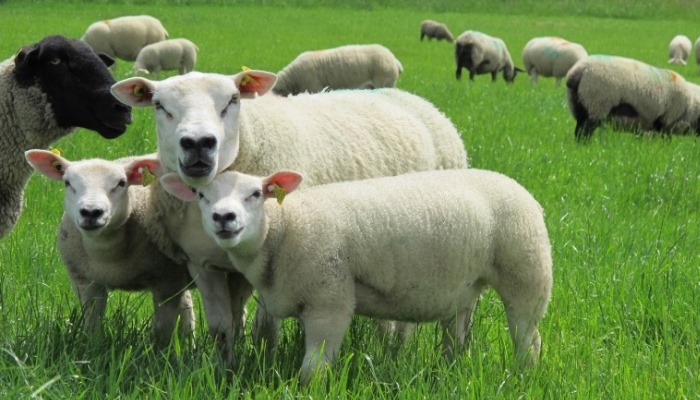22 June 2021
Ewe Replacements – beware of selling the family silver

Many March born lambs are currently being weaned. Damian Costello, Sheep Specialist, Teagasc Athenry cautions not to make the mistake of selecting replacement ewe lambs after some of the best lambs have gone for slaughter or been sold. He advises selecting replacements at first drafting or weaning
Good practice to retain 15-20% extra
The target is to be weaning lambs at 100 days or around 14 weeks of age. This means that many March born lambs are currently being weaned or will be over the coming weeks. A common mistake is leaving the selecting of replacement ewe lambs to later in the year after some of the best lambs have been sent for slaughter or sold for breeding. It is probably more tempting than ever this year given the current sheep trade. The perceived short term gain is far outweighed by the long term consequences of effectively introducing poorer performing animals into the breeding flock. The task of selecting replacements should take place at first drafting or weaning whichever comes first. Assuming enough suitable ewe lambs are available, it is good practice to retain 15 to 20% more than you will need at this stage allowing lambs that fail to perform post weaning be selected out and sold later in the season.
Breeding ewe replacements
There are many advantages to breeding ewe replacements from within your own flock, not least reducing the risk of buying in flock health issues. It will also put you firmly in control of the ewe breed that will make up your flock into the future. The system allows you to breed the best performing ewes in the flock with a high genetic merit maternal sire. The current weaning rate of your flock will determine what proportion of the ewe flock that needs to be mated to a maternal ram in order to produce enough replacements. Ideally, potential ewe lamb replacements are first identified at birth using criteria such as lambs born without assistance, vigorous and up sucking quickly, dam has lots of milk and good mothering ability. Permanent identification is needed using EID tag, management tag or ear notch. At weaning, this group of potential replacements can be selected from based on lambs that are structurally sound, healthy, have good conformation and well grown for their age.
Selecting replacements
On many farms ewe lambs are not identified at birth but there is still potential to identify lambs from high performing ewes bred to a maternal sire. The best grown lambs at weaning have good growth traits and come from ewes with good milk yield characteristics, particularly if reared as a twin. You are also selecting for fertility as the strongest lambs were probably conceived to first service. Many flockowners aim to select replacements reared as twins or triplets but in many cases single reared lambs will be needed to make up the required numbers. Is it unfair on single reared lambs not to select them on the assumption that they themselves are likely to produce singles? The trait has relatively low heritability and also you may have a dam consistently producing multiples for a number of seasons and lambs a single that particular year only. The lighter singles should definitely be avoided. Where possible, hard culling to remove poorly performing and problem ewes will speed up the improvement of a flocks breeding potential. It is especially important at lambing time to identify culls with a tag or ear notch. If you can identify the dams of the lightest lambs at weaning, insert a cull tag or ear notch, they are not up to the job.
The Teagasc Sheep Specialists issue an article on a topic of interest to sheep farmers every second Tuesday here on Teagasc Daily. Find more on Teagasc Sheep here
